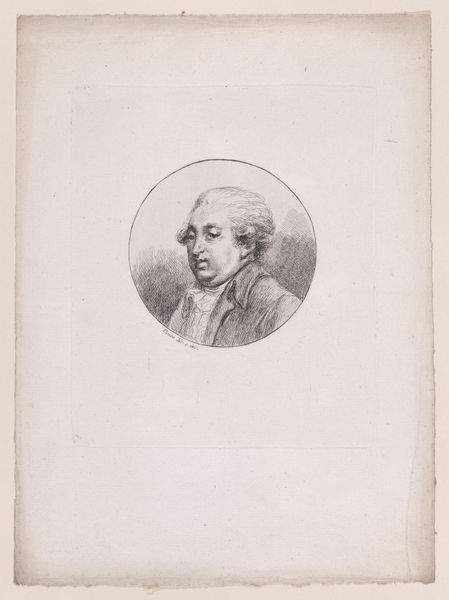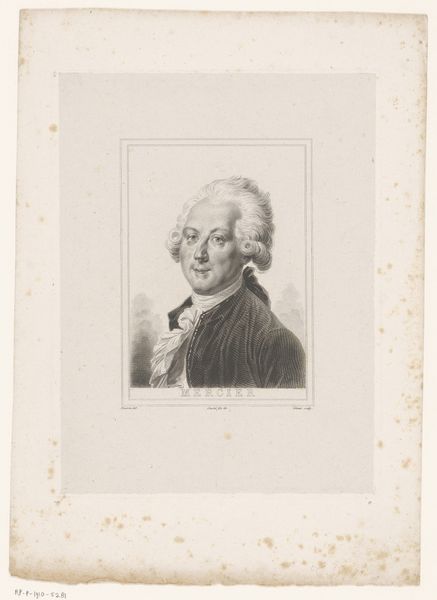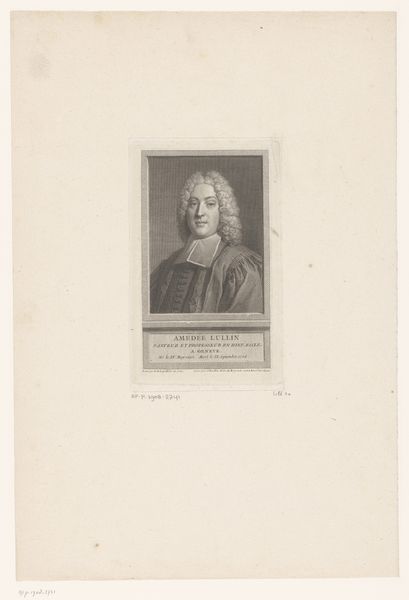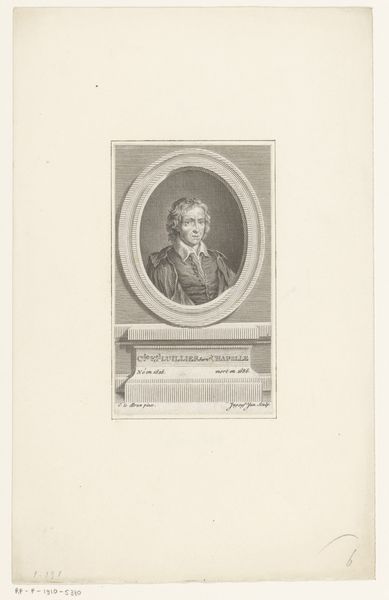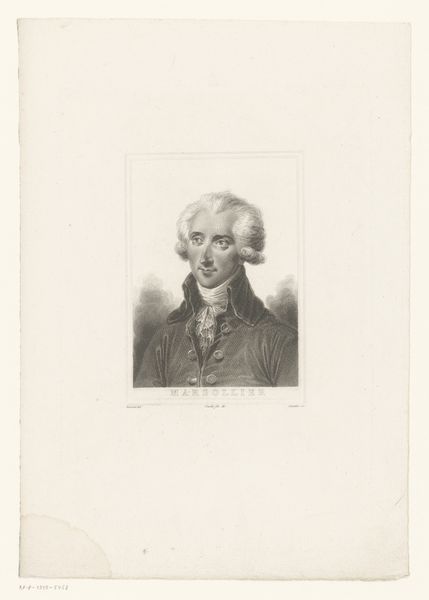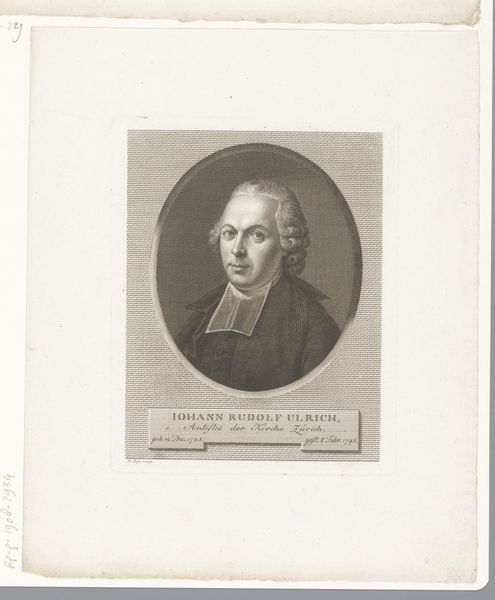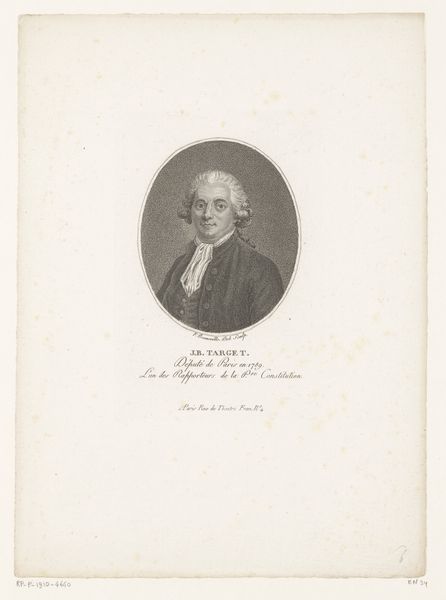
print, engraving
#
portrait
#
pencil drawn
#
neoclacissism
# print
#
old engraving style
#
engraving
#
realism
Dimensions: height 201 mm, width 225 mm
Copyright: Rijks Museum: Open Domain
Curator: Let's consider this engraving titled "Portret van Jean-Rodolphe Perronet". While the inscription dates the subject as an architect active in 1784, the print itself was created later, sometime between 1819 and 1843, rendered through an engraving process that gives it such striking clarity. Editor: There's a delicacy to it. The man's expression almost looks wistful, perhaps contemplating bridges not yet built! I'm curious about the context in which an engraving was made so many years later—what function was it intended to fulfill, and who produced it? Curator: Engravings like this one circulated widely as prints; cheaper than paintings and readily reproducible, such likenesses performed important functions in expanding public visual culture during the 19th century. It likely offered both commemoration and an embodiment of professional excellence. Editor: You're so right; seeing the delicate labor here—the cross-hatching to give weight and depth to the simple gray jacket he's wearing, and the crisp, starched lace frill—all seem incredibly important to highlight what a successful architect would wear. Almost a symbol! The material world rendered in such minute detail… I love that. Curator: That reading very much reflects this era’s sensibilities; portraits became important signifiers within rapidly modernizing European society. Consider how this engraving replicates details so precisely, in order to showcase status alongside individual likeness. Editor: Yes, there's almost a photographic quality despite being from a time long before cameras became widespread. The lack of color almost amplifies the presence of line and texture. His eyes seem to look at us knowingly across the ages. Curator: Absolutely, these small, affordable portraits helped construct and disseminate ideals—of civic virtue, intellect, social standing, but also of how printmaking workshops could efficiently cater toward bourgeois aspirations. Editor: Well, whether he’s gazing wistfully toward unfinished bridges, or posing as an ideal of professional virtue, Jean-Rodolphe's character certainly resonates strongly, even after two centuries. Curator: An insightful interpretation. I am interested in considering this image further by examining the labour conditions around 19th century engraving processes and markets, especially considering how that industry grew alongside burgeoning scientific, social and political movements of its time.
Comments
No comments
Be the first to comment and join the conversation on the ultimate creative platform.
